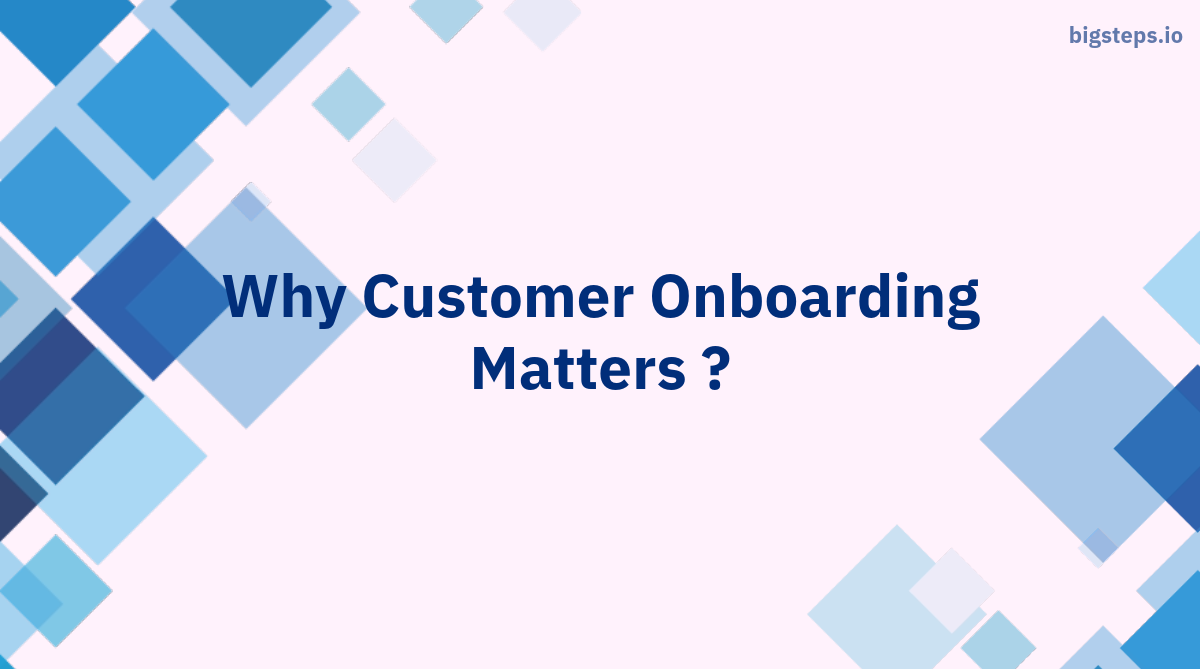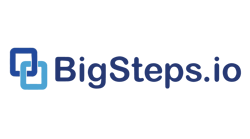
Customer Onboarding/Implementations are crucial for some businesses, and for those, it's a matter of success or failure
Why do some SaaS solutions call for structured implementation and onboarding, going beyond the simplicity of self-service? How do some companies find success with self-service models, while others flourish under more personalized onboarding processes? This article delves into these critical questions, revealing that the choice between self-service and hands-on onboarding is more than a matter of adhering to customer success best practices. It's about getting to the core of what drives your business success.
Our aim is to guide you in crafting an onboarding experience that not only encourages customers to use your product but also to recognize and appreciate its true value. Continue reading to discover actionable strategies that not only elevate your SaaS onboarding but ensure it resonates deeply with your customers’ unique needs
Table of Contents
- Understanding SaaS Solutions: Point vs. Process
- Understanding Adoption Journey: Point vs. Process
- Challenges in SaaS Implementation and Onboarding
- Common Mistakes in SaaS Onboarding Processes
- The Role of Onboarding Specialists in Customer Success Management
- Identifying the Right Time to Optimize Onboarding
- The Financial Perspective: Charging for Onboarding
- Conclusion
Understanding SaaS Solutions: Point vs. Process
Diving deeper into the SaaS landscape, we encounter two primary types of solutions: point solutions and process solutions. A point solution, such as Gmail or Calendly, is designed to tackle a specific, often universal problem. These tools excel in addressing a singular issue, providing focused and effective solutions across various industries.
Contrastingly, process solutions are the backbone of business operations, facilitating efficient execution of complex processes at scale. Think of CRM systems, HRMS, or Supply Chain Management tools – these are not one-size-fits-all solutions. They are tailored to fit the unique workflows and demands of a business. Process solutions are often the gears behind a company's sales, supply chain, compliance, financial processes, and hiring strategies. These systems are integral for businesses looking to codify existing processes to support growth and manage an expanding workforce. The implementation of such software is critical for scaling business processes efficiently, bringing together a network of stakeholders including end users, technical buyers, decision-makers, budget holders.
Point solutions are often self-served, involving fewer than three buying roles, and you'll mostly work with one or two stakeholders. The product offers a freemium version or a free trial that's good enough for decision-makers. They focus on solving a single problem across the organization or a team and indirectly impact revenue through productivity.
Understanding Adoption Journey: Point vs. Process
When it comes to adoption, point solutions typically involve a simpler buying process, engaging fewer stakeholders – usually no more than three key roles. You're likely to interact primarily with one or two decision-makers. These solutions often offer a freemium model or a free trial that suffices for evaluation purposes. They streamline a particular organizational or team function, indirectly boosting revenue through enhanced productivity.
In contrast, process solutions carry a direct and substantial impact on a company's financial performance. They can dramatically increase revenue or reduce costs by fostering better alignment, ensuring repeatability, and enhancing operational efficiency. The adoption of these solutions necessitates comprehensive organizational buy-in. This involves an in-depth cost-benefit analysis, examining long-term impacts, exploring alternative solutions, and addressing needs for reporting, automation, time-to-value, as well as overheads and maintenance expenses.
The stakes are particularly high with implementing process solutions. Missteps in this arena can have severe consequences, potentially leading to the departure of top executives, especially when multiple solutions are implemented in pursuit of aggressive growth. This underscores the extended sales cycle typical of process solutions, which is compounded by the complexities in implementation. This often results in a prolonged onboarding period, leading to a delay in launch and an extended cycle, sometimes up to a year, for realizing the value of these solutions.
Navigating Challenges in SaaS Implementation and Onboarding
Implementing process solutions, particularly those necessitating extensive consultation with experts, can be a slow and complex process. The challenges extend beyond just the technical aspects of feature implementation; they often hinge on the motivation bandwidth and capabilities of the customer's team to drive the implementation internally.. Other contributing factors to these challenges include the diverse priorities of large cross-functional teams, leadership changes during implementation, accountability issues among end-users, and unexpected events that can disrupt the process.
Common Mistakes in Designing Onboarding Processes for SaaS Solutions
1. Assigning a dedicated Customer Success Manager (CSM)
It's in the word 'dedicated'. Many businesses assume that a single CSM should be the consistent point of contact throughout the entire customer journey. However, the reality is that customers benefit from having one accessible contact at any given stage, not necessarily the same individual throughout their journey.
Assigning a designated CSM for different phases of the customer journey can be a more effective strategy. This approach doesn't imply frequent changes in personnel but a strategic transition of roles at key milestones. Typically, a customer might engage with three different CSMs: one during the initial onboarding phase, another during the critical stage of value realization, and a third post-maximum expansion. This tailored approach ensures that at each phase, the customer is supported by a CSM with the most relevant expertise and focus, enhancing the overall customer experience and success.
2. Overburdening Customer Success Managers (CSMs)
Tasking a CSM with managing renewals, new customer onboarding, product adoption, and escalation management can be problematic. Here's why:
- High Touch Requirement in Onboarding: Customer onboarding is a phase that necessitates high-touch engagement, a level of interaction that digital or low-touch models cannot fulfil. When a CSM is spread too thin across multiple roles, the quality and attention required for effective onboarding may diminish.
- Time Sensitivity in Expansion and Renewals: These phases are crucial and time-sensitive, requiring equally high levels of engagement. A CSM handling too many roles might not be able to provide the necessary focus, potentially leading to missed opportunities for growth or retention.
- Shift in Focus and Reactive Approach: When overloaded your CSMs with diverse responsibilities, the urgency of churn events or immediate issues often overshadows the importance of timely onboarding. This leads to a reactive, 'firefighting' approach rather than proactive customer management.
- Overwhelming Workload: Even if a CSM is assigned only one new customer every month or two, the workload can quickly become unmanageable over 8-12 months, particularly if the time to launch is around 45-60 days on avg. This constant juggling act lead to burnout and reduced effectiveness.
A practical solution is to establish a dedicated team focused solely on managing customer onboarding. Such a team can significantly reduce the workload of existing CSMs by about 40% in some cases, allowing them to concentrate more effectively on their respective areas of expertise and improving the overall customer experience.
3. Neglecting Task Management
Employees' priorities aren't just their day-to-day tasks, but also their professional development, work-life balance, and volunteering in company initiatives. Without disciplined use of a task management system and processes to help with overflowing tasks, team members might rely on memory, leading to escalations. The main reason for delayed projects and escalations is relying on memory for task management.
4. Misusing Time to Value as the Metric
The problem with using Time to Value (TTV) as the north start metric is that it's a subjective measure for each customer, even when you've achieved Product-Market Fit (PMF). Each customer has unique requirements, leading to variations in their perceived value and the time it takes for them to realize the benefits of your product. Instead of associating TTV with onboarding success, consider shifting your focus to Time to Launch (TTL) backed by the SMART goal framework and identify measurable metrics using tools like the CTQ tree.
The Role of Onboarding Specialists in Customer Success Management
Dedicated onboarding specialists or project managers play a pivotal role in managing complex projects like these. Their duties encompass value mapping, project tracking, task management, stakeholder coordination, handling escalations, providing training, facilitating cross-team communication, and ensuring a seamless transition from the sales phase to customer success.
Identifying the Right Time to Optimize Onboarding
Now that we've identified who is responsible for customer onboarding and potential pitfalls, it's essential to know when to address these issues effectively. Here are some key indicators to help you determine the right time:
Begin by monitoring leading metrics:
- Write a summary of what each of your CSMs is currently working on. If you find it necessary to constantly inquire about their tasks, it may indicate that your process relies too heavily on individual team members' memory, leading to inconsistencies in the process.
- Evaluate your sales cycle for top customers (high AVC or potential to grow ACV)
- Keep an eye on the number of new onboarding, pending renewals, and the total book of business for a CSM who have been on your team for more than 12 months. [Note that a renewal is pending if it's six months away from contract expiry.]
The Financial Perspective: Charging for Onboarding
Is charging for onboarding the right approach? Well, it's not a one-size-fits-all answer. Whether or not to charge for onboarding depends on various factors.
Not every implementation necessarily warrants a fee. Customers are willing to pay for the speedier time it takes to launch, not for inefficiencies in your product offering. If your business stands to gain more from rapidly onboarding customers, it might be more strategic to view implementation costs as an investment rather than passing them on to the customer.
Conclusion
To sum it up, the world of SaaS onboarding presents both opportunities and challenges. Embrace the complexities, learn from your mistakes, and consistently aim to deliver exceptional value to your customers. Your dedication to providing top-notch onboarding experiences can significantly impact long-term customer satisfaction and overall business success.
At BigSteps, we believe that now, more than ever, businesses should prioritize elevating their onboarding processes to the highest standards. Our product is specifically designed to help you achieve this goal. The fusion of perfecting onboarding, enhancing customer experiences, and fueling your business's growth is no longer a distant dream; it's within reach, just a 'single step' away.
It's time to put your insights into action. Take that first big step towards refining your onboarding processes and witness your business flourish. Your customers will undoubtedly appreciate the effort.
So, are you ready to elevate your onboarding process to unprecedented levels, paving the way for unparalleled business success?
